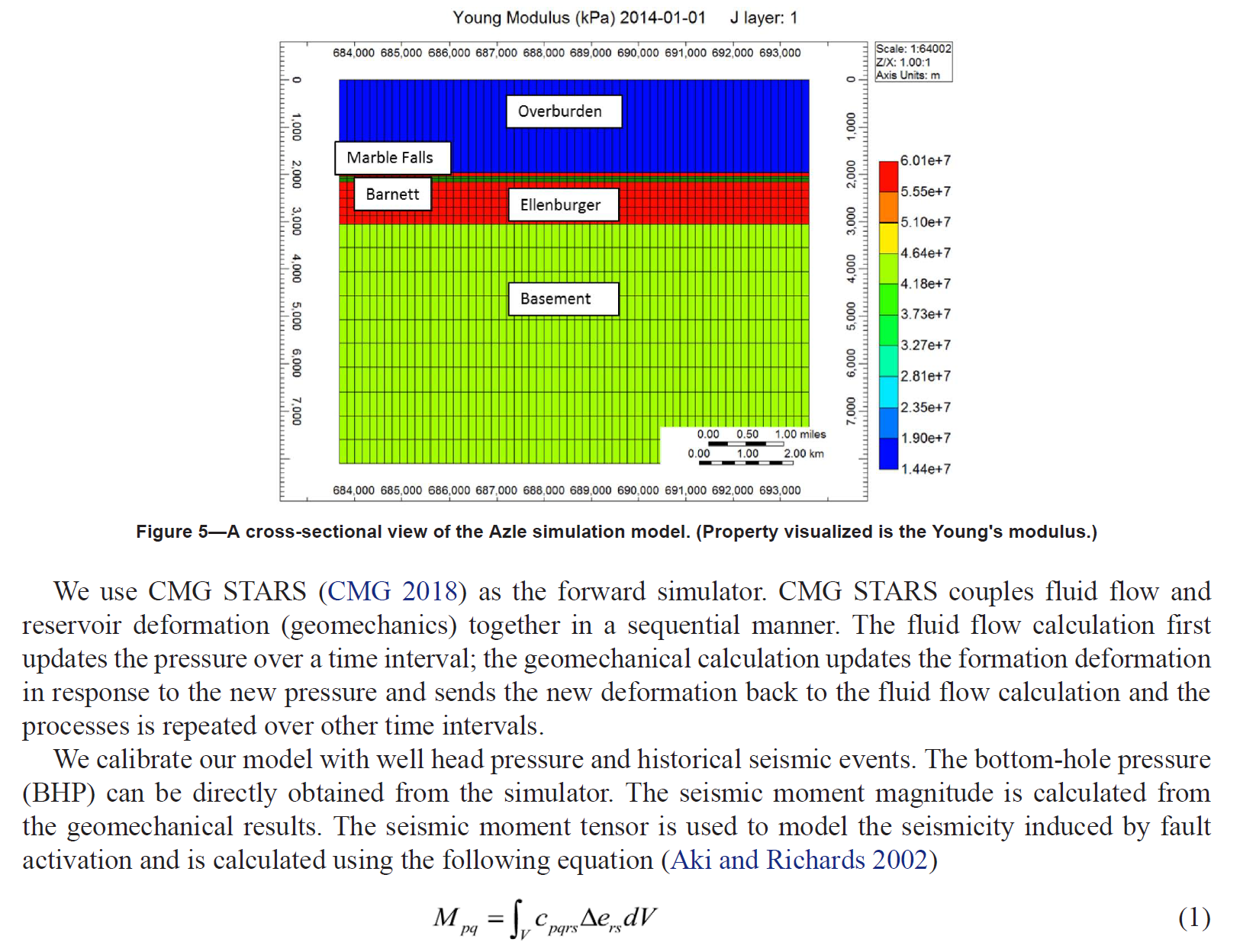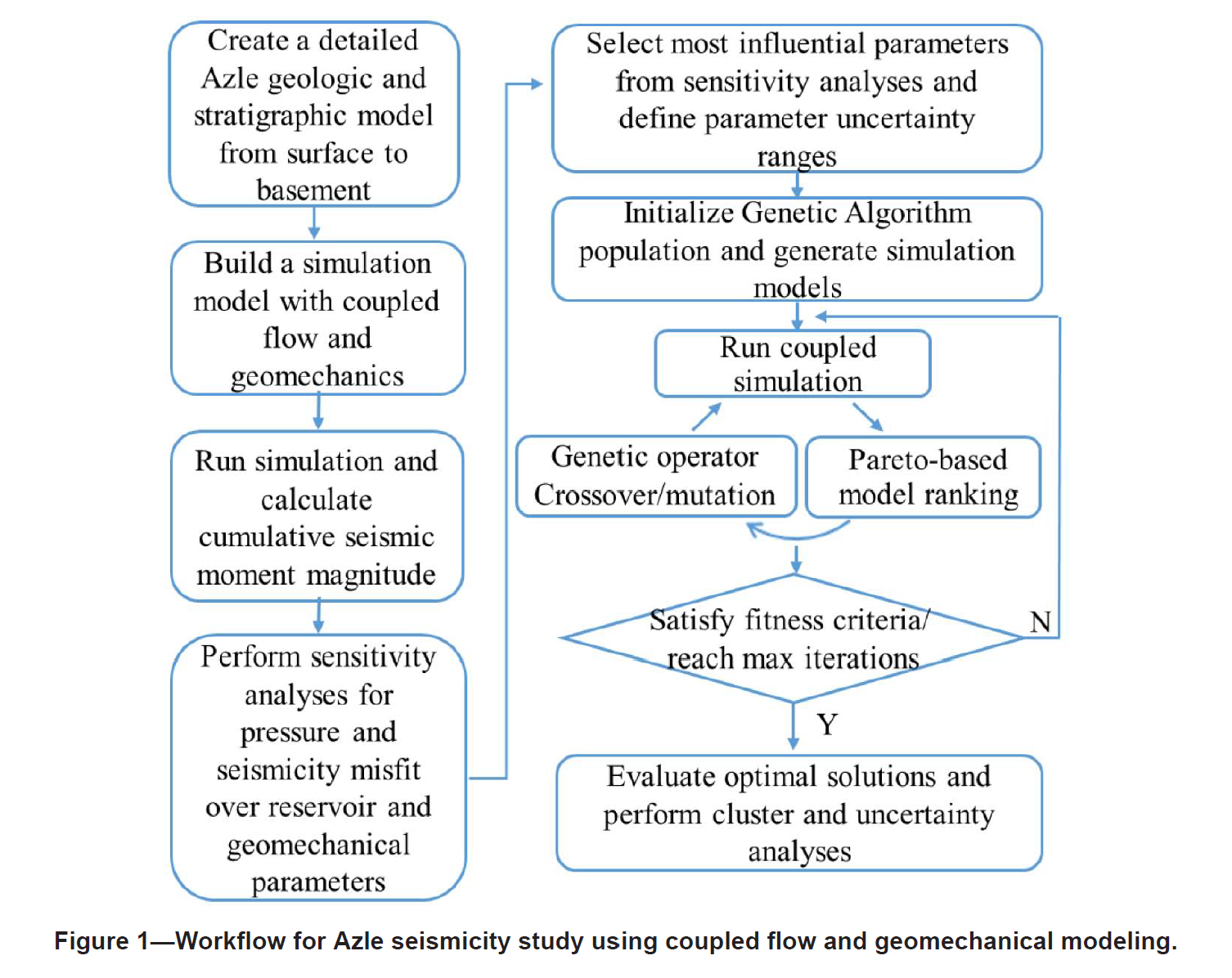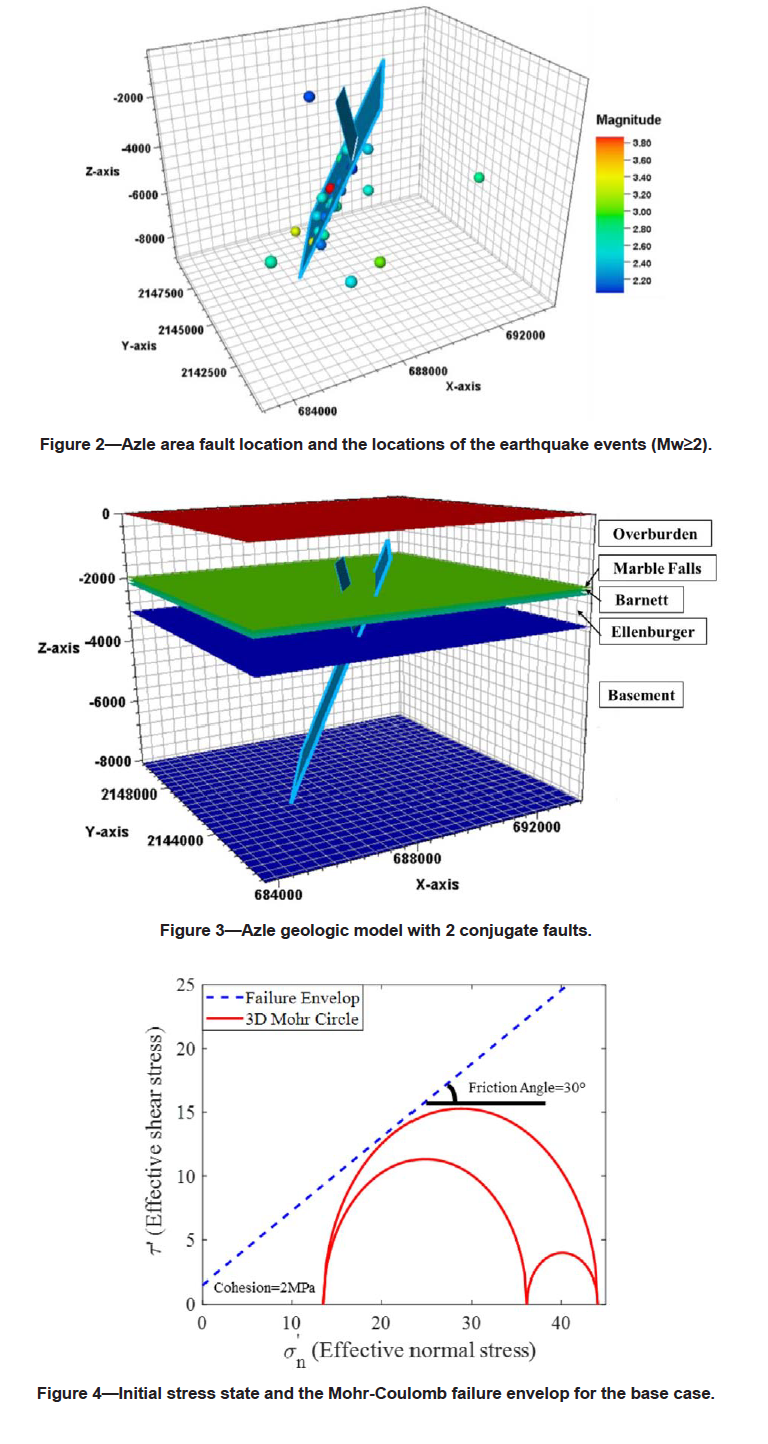2013年,在德克萨斯州阿兹勒附近的断层系统上记录到了一系列地震。为了确定地震活动的机制,进行了耦合流体流动和地质力学模拟,以模拟流体注入/生产和地震活动的潜在爆发。对广泛的储层和地质力学参数进行了敏感性研究,并使用校准模型来确定北德克萨斯州Azle地区地震活动的控制机制及其与附近碳氢化合物生产和流体注入的关系。收集地质、生产/注入和地震活动数据,以建立流体流动和地质力学耦合的详细模拟模型。地质力学模拟结果用于计算累积地震矩震级。在一系列储层和地质力学参数范围内,对注入井口压力和地震数据进行了敏感性分析。选择有影响的参数来执行井口压力和地震矩的基于帕累托的多目标历史拟合。
地质力学相互作用对Azle地区的地震活动具有重要影响。断层不同侧的不平衡载荷(整体注入和生产)产生应变变化的积累,导致地震活动的爆发。先前的研究似乎大大低估了流体抽取率,几乎低估了一个数量级。本研究中使用的等效井底流体速率表明储层孔隙压力下降,这与BHP趋势一致。因此,孔隙压力的增加可能无法解释Azle地区附近的地震活动,正如先前的研究所表明的那样。相反,地质力学效应和应变向基底的传播似乎是主要机制。从历史匹配中获得的低断层内聚力和最小水平应力表明,在流体生产/注入开始之前,断层必须接近或处于临界应力状态。敏感性分析表明,最小水平应力和裂缝梯度在与流体注入/生产相关的地震活动的潜在风险中都起着关键作用。流线流型进一步证明了基底层不存在流体运动,断层不同侧面的不平衡加载是控制机制。这是首次对Azle地区的流体流动和地质力学进行耦合研究,也是首次用流体流动和地震活动数据同时校准模型。
Coupled Fluid Flow and Geomechanical Modeling of Seismicity in the Azle Area North Texas
Abstract
A series of earthquakes was recorded along a mapped fault system near Azle, Texas in 2013. To identify the mechanism of seismicity, coupled fluid flow and geomechanical simulation is carried out to model fluid injection/production and the potential onset of seismicity. Sensitivity studies for a broad range of reservoir and geomechanical parameters are performed and the calibrated models are used to identify controlling mechanisms for seismicity in the Azle area, North Texas and its relationship to hydrocarbon production and fluid injection in the vicinity. Geologic, production/injection, and seismicity data are gathered to build a detailed simulation model with coupled fluid flow and geomechanics. Geomechanical simulation results are used to calculate cumulative seismic moment magnitude. Sensitivity analyses for injection well head pressure and earthquake data are performed over a range of reservoir and geomechanical parameters. Influential parameters are selected to perform a pareto-based multi-objective history matching of well head pressures and seismic moments.
Geomechanical interaction has significant impact on seismicity in the Azle area. Unbalanced loading (overall injection and production) on different sides of the fault generates accumulation of strain change, resulting in the onset of seismicity. Previous studies seem to have significantly underestimated the fluid withdrawal rates, almost by an order of magnitude. The equivalent bottom-hole fluid rate used in this study suggests a drop in reservoir pore pressure which is consistent with the BHP trends. Thus, pore pressure increases may not explain the seismicity near the Azle area, as indicated in previous studies. Instead geomechanical effects and strain propagation to the basement appear to be the dominant mechanisms. The low fault cohesion and minimum horizontal stress obtained from history matching suggest that the faults must be near or at the critically-stressed state before the initiation of fluid production/injection. A sensitivity analysis indicates that the minimum horizontal stress and fracture gradient each play a critical role in the potential risk for seismicity related to fluid injection/production. Streamline flow pattern further proves that there is no fluid movement in the basement formation and the unbalanced loading from different sides of the fault is the controlling mechanism. This is the first study coupling fluid flow and geomechanics in the Azle area and the first to simultaneously calibrate the models with fluid flow and seismicity data.





